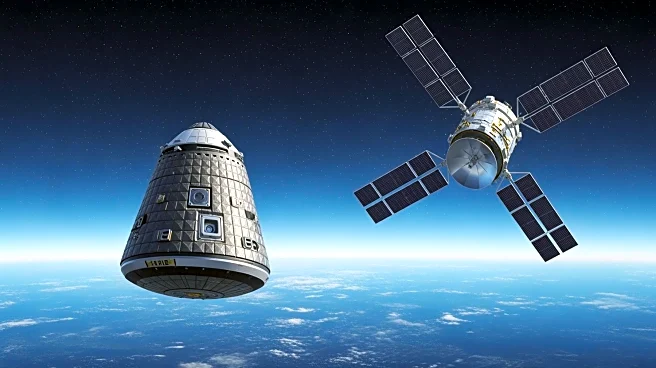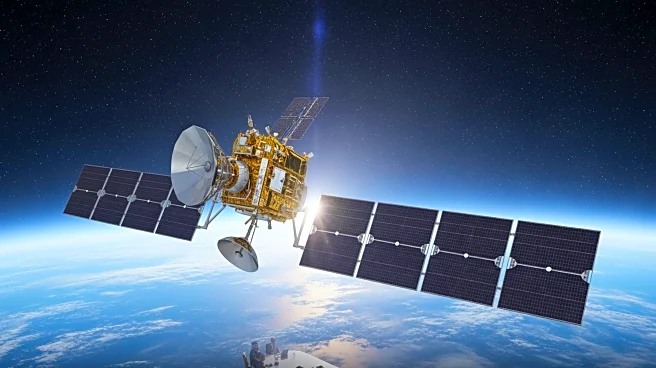What's Happening?
The United Launch Alliance (ULA) successfully launched the ViaSat-3 F2 satellite aboard an Atlas V rocket from Cape Canaveral Space Force Station in Florida. The launch occurred during a 44-minute window that opened at 10:24 p.m. EST on November 5, 2025.
The ViaSat-3 F2, weighing approximately 13,000 pounds, is set to enter a geostationary transfer orbit about 3.5 hours post-liftoff. This satellite is part of a series designed to provide broadband services, with the ViaSat-3 F2 expected to begin operations in early 2026. It follows the ViaSat-3 F1, which was launched in April 2023, and will be joined by a third satellite next year to complete the constellation.
Why It's Important?
The launch of the ViaSat-3 F2 satellite is significant for the telecommunications industry, particularly in enhancing broadband services across the Americas. The satellite is designed to deliver over 1 Tbps of capacity, addressing the growing demand for high-speed internet among commercial, consumer, and defense sectors. This capability is crucial as it allows for dynamic allocation of bandwidth to meet varying demand hotspots throughout the day. The successful deployment of this satellite marks a step forward in expanding global internet connectivity, particularly in underserved regions.
What's Next?
Following its deployment, the ViaSat-3 F2 satellite will spend several months reaching its final geostationary orbit. Once operational, it will begin providing broadband services, complementing the existing ViaSat-3 F1 and the upcoming ViaSat-3 F3, which will cover the Asia-Pacific region. The completion of the ViaSat-3 constellation is expected to significantly enhance global internet infrastructure, offering improved connectivity options for various sectors.
















